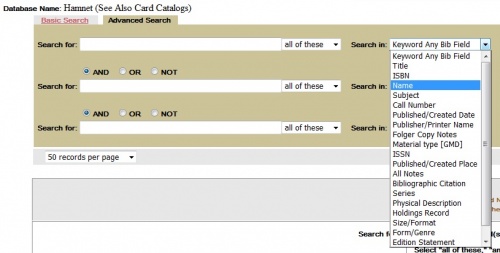Relationship designators: Difference between revisions
SarahHovde (talk | contribs) |
(tweaked) |
||
| Line 1: | Line 1: | ||
{{Draft}} | {{Draft}} | ||
Relationship designators, | Relationship designators, sometimes called relator terms, are words or short phrases that most commonly describe an entity's relationship to a collection item. | ||
==Relationship designators in library catalog records== | ==Relationship designators in library catalog records== | ||
Many libraries routinely add relationship designators to access points in their catalogs. As their name suggests, they are used to specify the relationships between entities and items. Their current usage is closely tied to [http://www.ifla.org/publications/functional-requirements-for-bibliographic-records FRBR], or ''Functional Requirements for Bibliographic Records'', a conceptual entity-relationship model developed by [http://www.ifla.org/ IFLA] that was foundational to the development of the cataloging standard [http://www.rdatoolkit.org/about RDA]. Using [[Controlled vocabularies|established terms]] to specify those relationships is an important component of current cataloging practices. | Many libraries routinely add relationship designators to access points in their catalogs. As their name suggests, they are used to specify the relationships between entities and items. Their current usage is closely tied to [http://www.ifla.org/publications/functional-requirements-for-bibliographic-records FRBR], or ''Functional Requirements for Bibliographic Records'', a conceptual entity-relationship model developed by [http://www.ifla.org/ IFLA] that was foundational to the development of the cataloging standard [http://www.rdatoolkit.org/about RDA]. Using [[Controlled vocabularies|established terms]] to specify those relationships is an important component of current cataloging practices. | ||
Relationship designators are most frequently used to clarify the relationship between an entity and a work, expression, manifestation, or item - William Shakespeare is the ''author'' of ''Hamlet'', the Trautz-Bauzonnet firm is the ''binder'' of a particular edition of ''Hamlet'' | Relationship designators are most frequently used to clarify the relationship between an entity and a work, expression, manifestation, or item - William Shakespeare is the ''author'' of ''Hamlet'', August Wilhelm von Schlegel is a ''translator'' of ''Hamlet'' into German; the Trautz-Bauzonnet firm is the ''binder'' of a particular edition of ''Hamlet''; Howard T. Goodwin is the ''former owner'' of a particular copy of that edition. Relationship designators can also be used to describe the relationship between multiple works/items (this edition is a ''translation of'' a previous text), or between entities (this person is the ''founder'' of this company). | ||
==Relationship designators at the Folger== | ==Relationship designators at the Folger== | ||
Revision as of 16:58, 24 March 2016
Relationship designators, sometimes called relator terms, are words or short phrases that most commonly describe an entity's relationship to a collection item.
Relationship designators in library catalog records
Many libraries routinely add relationship designators to access points in their catalogs. As their name suggests, they are used to specify the relationships between entities and items. Their current usage is closely tied to FRBR, or Functional Requirements for Bibliographic Records, a conceptual entity-relationship model developed by IFLA that was foundational to the development of the cataloging standard RDA. Using established terms to specify those relationships is an important component of current cataloging practices.
Relationship designators are most frequently used to clarify the relationship between an entity and a work, expression, manifestation, or item - William Shakespeare is the author of Hamlet, August Wilhelm von Schlegel is a translator of Hamlet into German; the Trautz-Bauzonnet firm is the binder of a particular edition of Hamlet; Howard T. Goodwin is the former owner of a particular copy of that edition. Relationship designators can also be used to describe the relationship between multiple works/items (this edition is a translation of a previous text), or between entities (this person is the founder of this company).
Relationship designators at the Folger
Searching relationship designators in Hamnet
There is no dedicated search option for relationship designators in the current version of Hamnet. However, you can approximate one by selecting the "Name" search from the drop-down menus on the Advanced Search tab and entering the relationship designator you're interested in (such as "printer," "binder," "illustrator," etc.). The "Name" search indexes all the text in the 100, 110, 700, and 710 fields (among others), and is essentially just a keyword search of all name access points.
Cataloging policy
- Whenever possible, add an appropriate relationship designator to the access point for an individual or an institution.
- Refer to the list of preferred relationship designators on Bard Classic (Folger staff only). These terms are taken from RBMS relationship designators, RDA relationship designators, and MARC relator terms. Needs discussion
- If you cannot find an appropriate relationship designator on an established list, do not add one (rather than add one that may be incorrectly scoped, etc.).
- When adding multiple relationship designators to one access point, add multiple subfield ‡e's alphabetically within WEMI order.
- Exception: create separate access points with ‡5DFo when needed for item-specific relationship designators.
- Relationship designators are added in the following formats:
- [authorized access point][comma][space][subfield ‡e][space][relationship designator][period]
- or, for multiple designators:
- [authorized access point][comma][space][subfield ‡e][space][relationship designator][comma][space][subfield ‡e][space][relationship designator][period]
